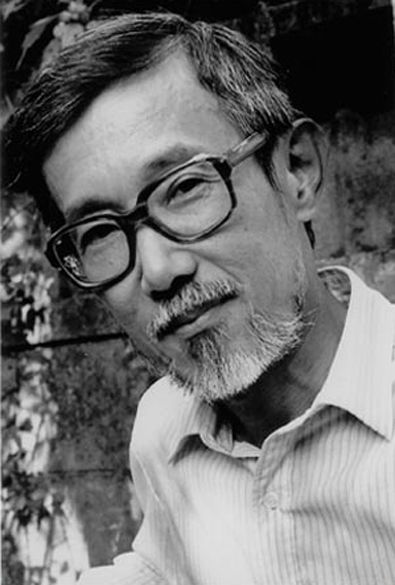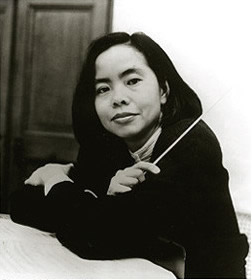By Stephen Brookes • The Washington Post • November 12, 2010
 Ton-That TietSometimes it feels as if you only get to hear modernist Vietnamese music every, oh, thousand years or so. And in fact it took this year's millennium celebration of the founding of Hanoi to inspire a concert of mostly Vietnamese music at the Freer Gallery on Wednesday night. It was, as you might expect, a distinctive evening that reflected the region's ancient culture, its fateful interaction with the West, and the turmoil of recent decades. In short: music that blended East and West in ways that were meditative, sometimes violent, deeply moving and almost always thought-provoking.
Ton-That TietSometimes it feels as if you only get to hear modernist Vietnamese music every, oh, thousand years or so. And in fact it took this year's millennium celebration of the founding of Hanoi to inspire a concert of mostly Vietnamese music at the Freer Gallery on Wednesday night. It was, as you might expect, a distinctive evening that reflected the region's ancient culture, its fateful interaction with the West, and the turmoil of recent decades. In short: music that blended East and West in ways that were meditative, sometimes violent, deeply moving and almost always thought-provoking.
Among the highlights was Ton-That Tiet's "Chu Key I," which explored natural cycles using spare, diaphanous textures and extended techniques on the violin, viola and cello. Written in France in the late 1970s, it evoked a distinctly Asian sensibility in the vocabulary of European modernism, to great effect.
Two recent works by Vu Nhat Tan drew on traditional Vietnamese performance techniques and were played with great skill and sensitivity by Airi Yoshioka on violin and Madeleine Shapiro on cello. Particularly personal and vivid was P.Q. Phan's "Memoirs of a Lost Soul," built on his memories of growing up in the war years, the sounds of a children's musical game, and the death of a Vietnamese court singer during a performance. Bun-Ching LamThe gifted Vietnamese pianist Quynh Nguyen was the featured artist of the evening, and she turned in a fine performance of another work by Ton-That Tiet, "Three Pieces for Piano." Her account of Hoang Mi's more traditional "The Black Horse" was rousing, but the piece itself -- all rollicking rhythms and pentatonic scales -- sounded weirdly out of place in the program, like Twinkie Flambé in the middle of a sophisticated meal. The real gem of the evening, in fact, may have been Bun-Ching Lam's "Six Phenomena," a wonderfully engaging work built on the Buddhist Diamond Sutra, played with astounding sensitivity and insight by pianist Margaret Kampmeier.
Bun-Ching LamThe gifted Vietnamese pianist Quynh Nguyen was the featured artist of the evening, and she turned in a fine performance of another work by Ton-That Tiet, "Three Pieces for Piano." Her account of Hoang Mi's more traditional "The Black Horse" was rousing, but the piece itself -- all rollicking rhythms and pentatonic scales -- sounded weirdly out of place in the program, like Twinkie Flambé in the middle of a sophisticated meal. The real gem of the evening, in fact, may have been Bun-Ching Lam's "Six Phenomena," a wonderfully engaging work built on the Buddhist Diamond Sutra, played with astounding sensitivity and insight by pianist Margaret Kampmeier.